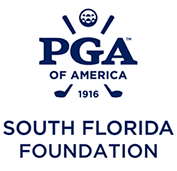How to Cure the Yips in Golf

By Bradley Turner Keiser University College of Golf Director of Online Golf Instruction – MBA, PGA
Ben Hogan, Sam Snead, and Arnold Palmer are a short list of Hall of Fame professionals who were great putters in their early careers yet struggled later to make even the shortest of putts. Ben Hogan could hit a golf ball consistently to the middle of the green from 200 yards, yet he could miss the entire hole from just three feet. All three suffered from the dreaded yips, an affliction you would not wish on any golfer.
The yips are a phenomenon that seems to afflict skilled athletes as well as accomplished musicians. The primary symptom of the yips is the inability to perform previously mastered skills. The nerves in the hand and wrist send involuntary muscle spasms, resulting in shockingly poor results! Musicians may struggle with specific notes or musical phrases, while professional baseball players have suffered with the yips of throwing a baseball short distances. Yankee second baseman Chuck Knobloch was a Gold Glove second baseman early in his career but eventually struggled with the yips when making a simple throw to the first baseman. Knobloch was finally moved to the outfield and then out of baseball entirely.
How Does This Happen?
According to Walden University professor Dr. Deborah Weatherspoon, “Focal dystonia is a rare condition, which people sometimes refer to as the yips. It is a neurological disorder involving involuntary spasms in the body’s small muscles. It can result from overuse or repetitive stress and affects musicians and golfers.” It seems as if the yips occur when the task requires the individual to initiate the movement of the ball or action. Any golf shot can become a situation where a golfer can yip the shot, while in other sports like baseball, it is rarely the hitting or fielding that creates a problem as players react to the ball. But once the ball is in hand, the player must now throw it, which is when yipping shows its ugly face.
The genesis of the yips is still being researched, but it is generally agreed that something happens to the individual that starts the yips cycle. Sometimes an injury alters the previously trained movement pattern resulting in a lower level of performance. For many that struggle with the yips, the cycle begins with one terrible golf shot or poor throw in baseball. This leads to the athlete becoming overly concerned with embarrassing themselves with another lousy outcome. As confidence decreases, so do the likelihood of trusting their trained skills. The next step on the yip cycle is to overcontrol the motor skill, hoping to stop the negative outcome. Trying to be too perfect can escalate poor performance. After a few yipped golf shots or throws in baseball, the cycle deepens, and then the athlete has a major mental problem.
The involuntary muscle spasm at impact is unique for each individual. In golf, some will have problems driving the ball from the tee, others it is a delicate pitch shot, and then we have the golfers that can’t make a three-foot putt. These golfers seek real answers to this affliction and want to know how one can cure the yips.
Curing the Yips
The answer to that question is complicated. According to experts, you can’t cure the yips, but you can take action to manage them. Essentially the messages from your brain to the muscles to perform the motor skill must be altered. Without making any changes, the neural pathway signals will continue to send the “yip” message or “miss” message resulting in involuntary muscle movement through impact. According to the Mayo Clinic, “because the yips may be related to overuse of specific muscles, a change of technique or equipment may help.” The Mayo Clinic suggests that changes in the grip, mechanical technique, or change in equipment can create a new neural pathway that can disrupt the yip signal from the brain to the muscles.
Change the Grip
The first and most cost-effective change is to try a new way of holding the club. This is especially beneficial in putting. When you change how your hands are placed on the putter, the associated muscles used to putt will also change. This requires that the brain figure out how to move the putter with this new grip. The brain will begin constructing a new neural pathway to send the “putting stroke” signal to the appropriate muscle groups.
The old neural pathway is altered, and with that change, the brain can sometimes be freed up for the golfer to make a more confident putting stroke.
Change Mechanical Technique
Changing mechanical techniques will require you to work with a qualified golf coach. Faulty swing mechanics can be the underlying reason for poor driving, pitching, or putting. Sometimes a change in the grip will result in the need to change impact mechanics. A change in mechanics brings the potential for renewed confidence in your performance. Understanding why the bad shot occurs can solve the mental challenges of the yips.
Change Equipment
I have never met a great ball driver who did not love their driver. The same applies to great wedge players and putters. The highly skilled golfer loves the equipment they are using. Consequently, it may be time for a change if your yipping has transferred into despising the clubs you are using. Properly fitted clubs can make a big difference in your ball flight and increase your confidence.
Change is a Must
Remember, the science of motor skill development supports this idea of change! But making permanent changes with the positive results you seek requires practice. The magic potion in managing the yips is increasing the level of trust in your ability. When you execute quality golf shots in practice, you begin to build a lasting confidence that will carry you through your next big competition.
The yips have been around from the early days of golf and will sadly be with us as the game is played over the next century. It is comforting to know that there are natural solutions for those that suffer from the yips or any similar term to describe that sudden spasm at impact that strikes fear into the hearts of golfers everywhere.
If you’d like to study with Bradley Turner and other PGA Master Professionals, contact the College of Golf today.















Thanks … time for a new putter and grip… what a round… good driving, good irons… and then the flat stick!!!
Thank you for the information, I’m working hard at fixing this problem completely to become a good putter again. It has been incredibly frustrating for me, to the point where I was going to quit the game. But with professionals that have studied this and have offered good advice I’ve continued to play.
Thank you. Starting tomorrow will begin with new grip first and wedge as well.
Chipping yips driving me away from game I have played for over 40 years.
I hit the green in regulation and then three or four putt!
I attribute it to 60 years of tennis, and now pickleball. I naturally put top spin on my racquet sports, and now roll my wrist while putting.
I’m a great contributor to “scramble” tournaments because they don’t depend on my putting!
I have contemplated quitting.
Geez, for those that suffer from this, like me, you’ve really nailed it. It’s comforting to know that greats like Palmer, Hogan, etc., have experienced this tremendous barrier to enjoying something I love. I literally hate myself when it happens (every putt). The funny thing is my game knows how debilitating my putting is that my tee shots and iron play is almost flawless. Imagine shooting a 97 and hitting the ball wonderfully all day, until…
I do have one remedy left in my back pocket and it’s called practice. This article offers a change in grip, thank you! It’s hard to change mechanics in a putting stroke. Quitting is not in my DNA.
Regarding chip yips: I had them bad. I finally took a lesson from a very good teacher who noticed right away that my head was in back of the ball so he fixed that (he moved it in front which also helped me place most of my weight on my front foot). Then he asked me which hand I wanted to use taking the club back. I told him I had no idea. He insisted that I pick one so I picked my right hand (both hands stay on the club though). Then he told me to return the club head to the ball at the same pace that I took it back. I haven’t yipped a chip in four years. I think it was the combination of technique change, thought replacement and hope infusion working in combination that did it. Good luck!
l have had the problem with my putting l changed my putter grip this did not improve my putting action
By chance a member was taking some clubs to the tip and asked if anybody wanted them in his boot was a broom. handled putter which has corrected my putting wrist rotation now(12) months . unfortunately my chipping has now become a problem .thanks to reading some comments l am going to change my grip before buying thicker ones
yips cannot be cured, period. Managed? maybe but you will never ever get that smooth untwitching stroke again unless you change to RH if you’re LH and vice versa. That’s the only real change that works. The other grip methods will work better than your starting point but when there’s that feeling of pressure the new grip will fold like a cheap suit.
I yip with my drives and long irons.
Putting and chipping are fine.
My legs shift and my club gets stuck in my back swing.
I have been playing golf for 50 years and my handicap is 12.
Can you help me?
I live in Boca Raton